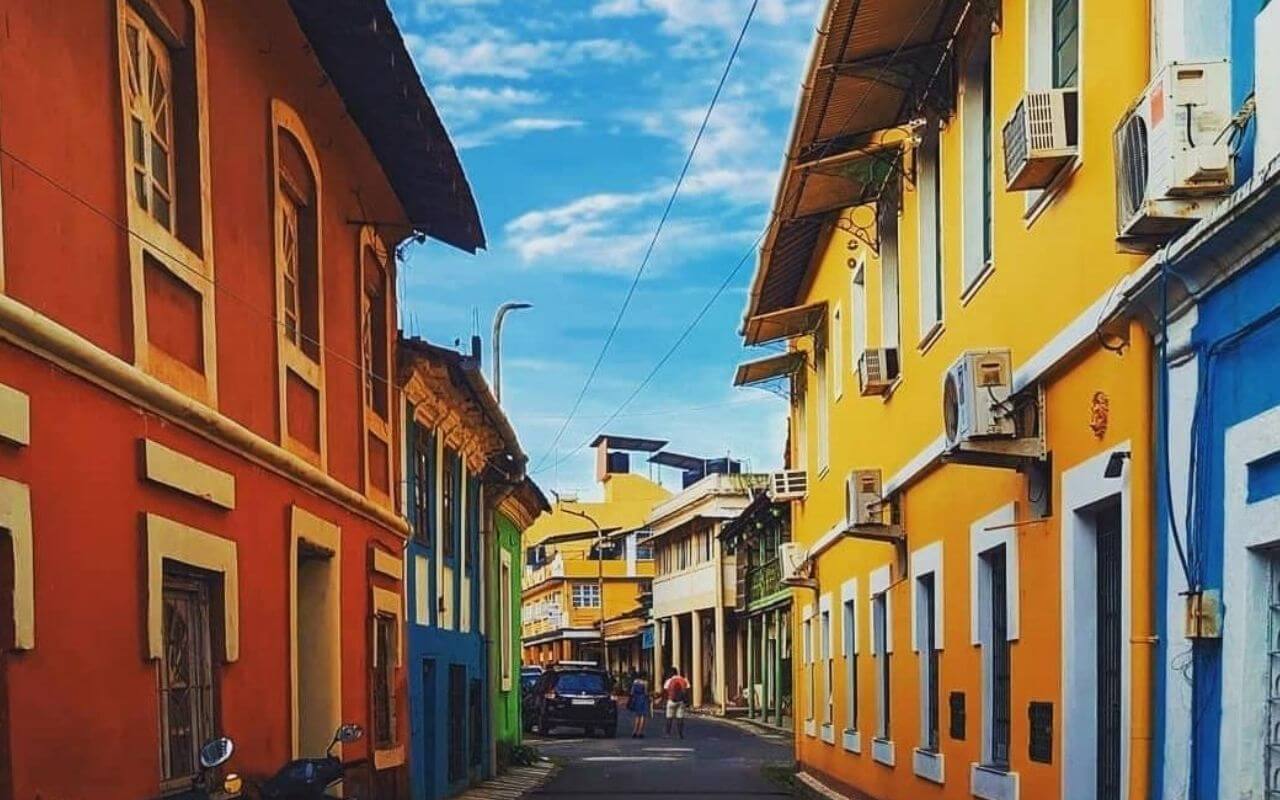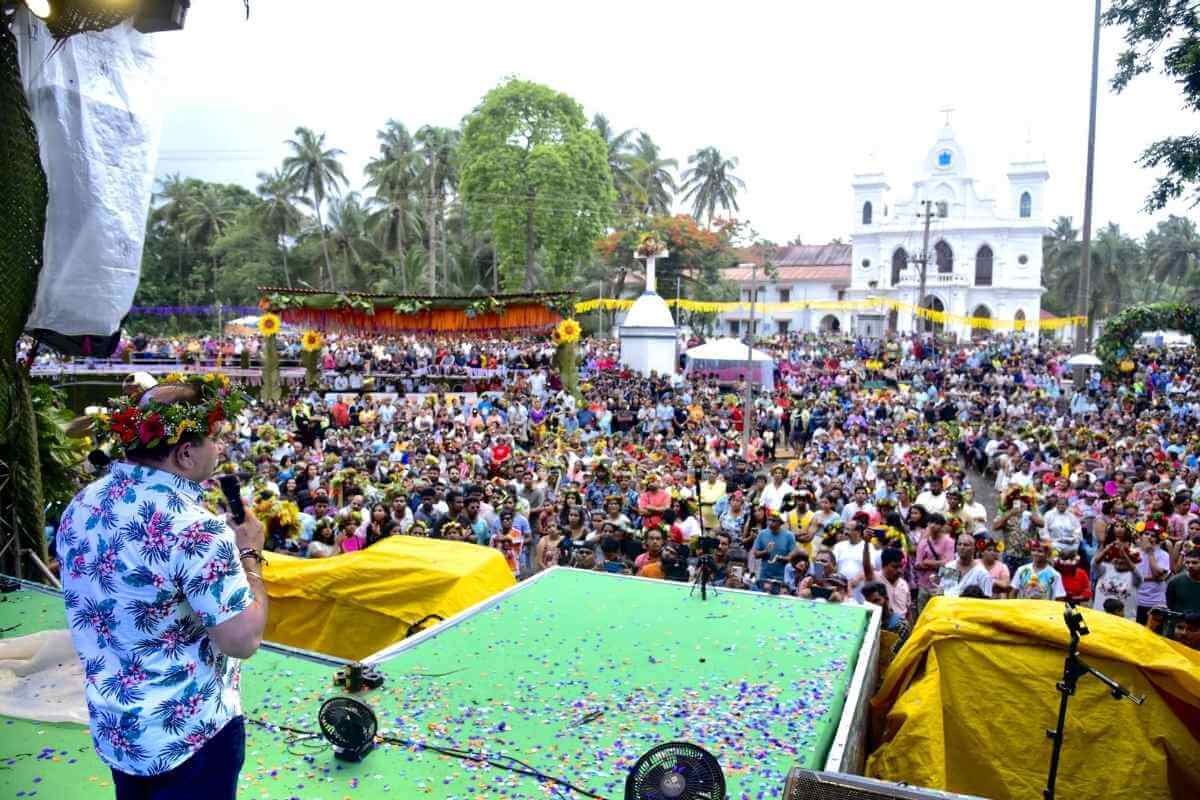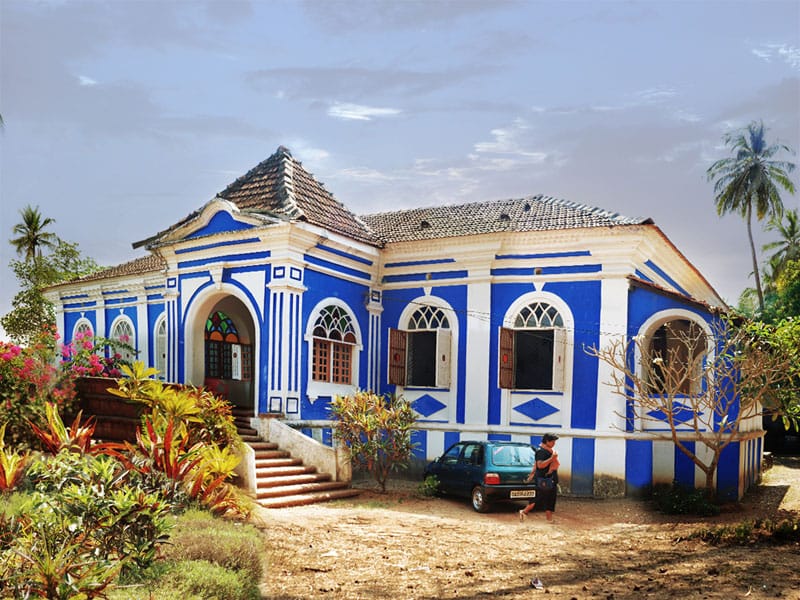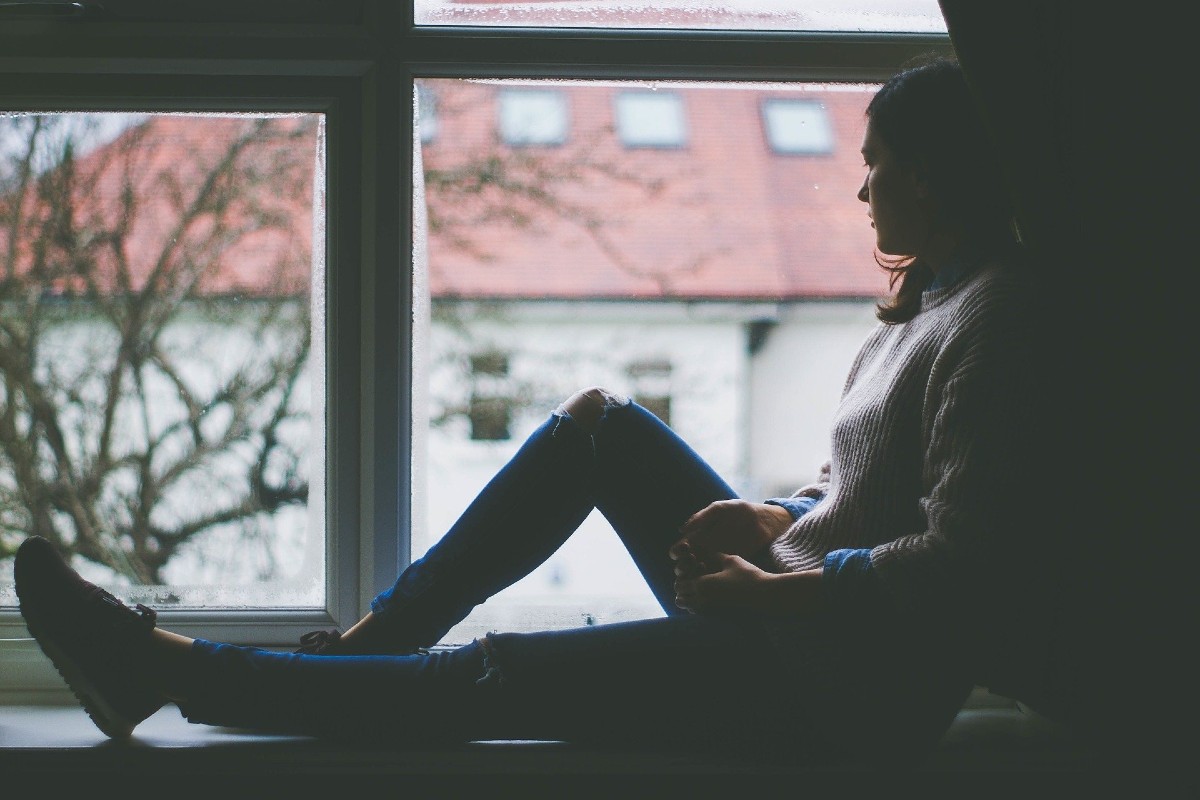One of the many things we love about Goa is how it stands out from most other places in the country. It is very grounded in Indian culture and the spirit of India but there’s an undeniably foreign language to Goa that comes as a delightful change of scene to us. Refreshing is perhaps the best word to describe it, which explains why so many people head here to have a taste of a different kind of life. Be it in our laid-back culture, our cuisine, or our architecture, this refreshing attitude is consistent. And this uniqueness begins in our homes, quite literally.
Goan houses are a treat to the eyes- dainty yet majestic. Flitting throwbacks to the era that was, the traditional Portuguese-Goan houses are real marvels. It is ever-so delightful to see one stand in all its glory tucked behind the green fields and coconut trees (which is not very difficult given the interesting choice of paint!). They stand as a reminder of the heritage amidst all things new and changing. Let’s look at what makes our houses stand out, and proud!
Difference between the Portuguese-origin and the Hindu-origin Homes
The stark difference lies in the fact that Portuguese houses are street-facing. They often have stairs leading up to the main door, creating a bit of drama! The Hindu homes on the other hand were inward-looking, centered around a square courtyard or the chowk. This is where the family gathered and where the “Tulshe” or the revered Tulsi plant is generally placed.
Bright Colouring
Whatever be the origin of the house, they are tied together by their affinity for bright startling colors! Goan houses look cute like cakes covered in the most fun-colored fondant in hues like blue, yellow, bright greens and magenta, purple, and the classic brick-red! In the olden times, these colors were created using vegetable and other natural dyes. The wooden windows and brown roofs, or fences painted in a delicate white perfectly complement these shades.
The Material
Goan houses are mostly built using locally sourced Laterite bricks and Mangalore tiles which are used for the characteristic tiled sloping roof structure, fit to bear the ravages of our harsh monsoons.
Gate-Posts and Compound Walls
These are very characteristic of Goan houses. With the practical reason of allowing more privacy, this feature also makes the houses look regal! The dramatic stairways that sometimes lead from both sides to the main door add flair and drama. Floral-painted ceramic tiles leading up to the main door, usually painted in blue and green are a common sight.
More on Portuguese Architecture…
Subtle but elegant design elements such as skillful stucco molding around windows and intricate railing designs enhance their appeal manifold! Adorned by these designs, large ornamental windows open onto the verandahs, while smaller dainty ones open outwards from the rooms.
The balcao or a large verandah or porch in the front is a salient element, this was mostly used for seating. They usually comprise tall European-style columns around them. An occasional cross mounted on the walls, or perhaps installed atop the columns, signifies that it is a Christian household. One can very well imagine sitting here in an old rocking chair with a cup of hot chai and some Kapa, musing over the steady rains on a peak monsoon day.
Cornices, which are essentially a feature of Italian architecture, are yet another impressive design aspect of Portuguese-Goan houses. They are usually made of beautiful polished wood. They instantly up the aesthetic quotient and give a solid and sturdy look to the roofs.
Beautiful, practical, strong, and stunning- Goan houses are near perfect to look at, as well as to live in. The exteriors are impressive but it only begins there- the interiors are far more ravishing and posh. Often decorated with the most beautiful mosaic tiles, vintage lamps, porcelain artifacts, and antique furniture, it only gets better!
Conclusion
No wonder then, that so many of these homes are now being converted into Bed-and-breakfasts and home-stays, garnering more guests than the regular hotels for their beauty and authenticity. Not only this, many of them are even thrown open to visitors, like museums! The famous Braganza House at Chandor is an example of this. Built by the Braganza family on land granted by the King of Portuguese in the 17century, this glorious mansion is one of the biggest in Goa.
Although there is no dearth of them across the state, one can head to a few places where they are most common. Loutolim, Anjuna, Aurora, Ponda, and Chandor are famous localities where some of the houses are over 400 years old! And of course, there is our lovely Latin quarter of Fontainhas.
So what are you waiting for, pick up your camera, wear your prettiest floral attires, and head to these places for some true-blue Goan aesthetic!




























